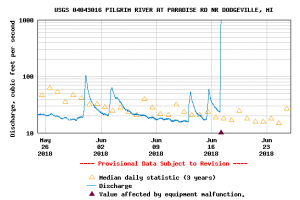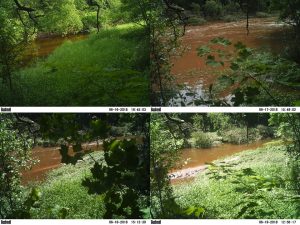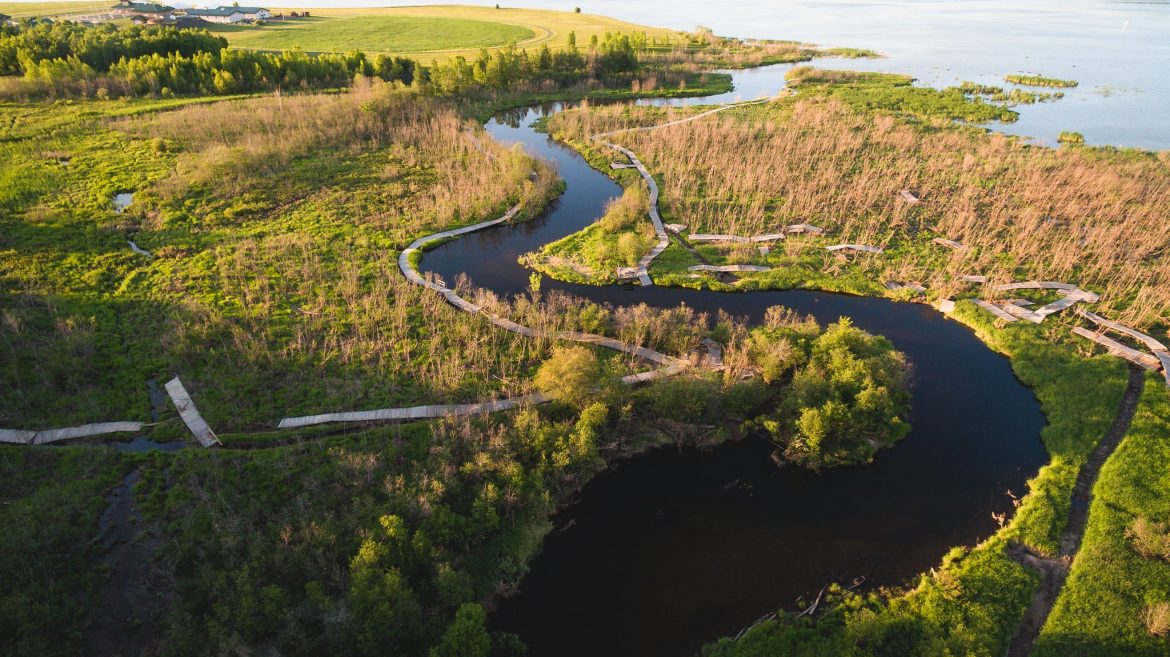Early morning June 17, Houghton was hit by a series of thunderstorm that dropped a quick 6″ of rain in a few hours, leading to flash flooding in town and much destruction of property and infrastructure that even made the national news (here’s a link to one good story about the floods in the Detroit Free Press). It was remarkable to see the destruction and to watch the community come together to do so much so quickly, embodying Sisu. If you want to learn more about that, or about how to help with the long-term recovery, check out the Copper Country Strong website.

The hydrograph showing the flash flood that broke the Pilgrim River USGS gauge.
In lab, the flash flooding has posed challenges and opportunities. We aren’t sure how high the flow peaked at the Pilgrim River, which we have been using as one of the focal rivers for the NSF CAREER project along with other projects, because the flood took out the USGS gauge, along with the bridge/culvert that was next to it. The flood moved through the river very quickly – we first got out to the site on Tuesday morning, about 48 hours after peak flow (we think) and the river was already back down to water depth similar to where it was before the storms on Saturday. We luckily had a trail camera deployed at one of our study sites, and it showed the dramatic changes in water levels over the short time period.

Check out how high and quickly the river came up – dates and time stamps are on the bottom of each photo.
Just downstream from the trail cam the river flows through the Nara Wetland complex, before flowing into the Portage River. The Nara Nature Park includes a series of boardwalks along the river and through the wetland that are a popular spot for recreation, and which we use to quickly and easily access locations for teaching and research. The flood damaged the boardwalks extensively, which you can see below and in this drone video, which was collected for us by a local photographer (because our research drones are out of town and the university photographer’s drone was damaged when the Admin building on campus was flooded – d’oh!)
Our Nara wetland study area on the Pilgrim River post-flood, so many thanks to @brockit for this awesome birds-eye view of what we'll be dealing with trying to get into the field to sample over the coming weeks – check out the video here: https://t.co/mPe22qu9UB pic.twitter.com/vuahrlRr33
— Dr. Amy Marcarelli (@AmyMarcarelli) June 25, 2018
All the disturbance at the Pilgrim has posed challenges and opportunities for our research, particularly for PhD students Kevin and Chris, which will be the focus of forthcoming posts here and on Tech’s research blog, Unscripted.
Scouting damage at one of our permanent study sites after the flood on the Pilgrim. Getting ready to start sampling this afternoon. #dayinthescilife #HoughtonFloods pic.twitter.com/waG7FcrHbK
— Dr. Amy Marcarelli (@AmyMarcarelli) June 19, 2018
The floods here and elsewhere have also led to large plumes of materials being delivered into Portage Lake and Lake Superior…which is another of our research interests, and which I’ll post more about later.

